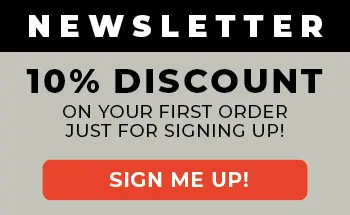What is CBG and what are its unique Medical Properties?
What is CBG? It has been called ‘the mother of all cannabinoids’ and if you aren’t familiar with it now, the chances are that you will be before long. CBG (Cannabigerol) is likely to be the next cannabis compound to receive special attention from researchers and medical users because it has some unique qualities that have been linked to health benefits.
But what is CBG and how exactly can it benefit the human body? It is the precursor (or let’s call it the parent molecule) from which the cannabinoids THC and CBD are both synthesized during the growing of a cannabis plant. Because it is the first cannabinoid to be formed in the cannabis plant – providing the foundation for other cannabinoids to develop – it has earned its ‘mother’ nickname.
What is CBG? Good Question!
While the question ‘what is CBG?’ may be on many people’s lips today, you may be surprised to learn that it was first discovered many years ago, in the 1960s, by scientists who had been analyzing hashish. As it is a minor cannabinoid, found in small amounts in most strains, it has been lying under the radar and its only now as research expands our knowledge of the many cannabis compounds (480 and counting…) in the plant that the significance of CBG has become more clear.
From a health perspective, it is CBG’s relationship to the body’s endocannabinoid system that is generating significant interest. As our recent article on CBD , the endocannabinoid system keeps the body in balance and therefore in good health. The endocannabinoid system (ECS), which was only discovered in the 1990s, is a fascinating area of study for medical researchers and has been linked to the regulation of critical bodily functions including memory, sleep, appetite and mood.
CBG and the Endocannabinoid System
The human body produces its own endocannabinoids, when the body needs them, which bind to CB1 and CB2 receptors, which are found in your peripheral and central nervous systems. At the recent EuroAm conference in Prague, Dr. Jokūbas Žiburkus , an associate professor from the University of Houston and Director of Florance World, argued that the endocannabinoid system governs far more of our bodily states than we realize – including the runner’s high and the satisfaction effect on babies receiving their mother’s breast milk.
Research has shown that THC also binds to these receptors generating the range of effects associated with ‘getting high’ – from thoughts that spiral off into tangents to feelings of euphoria, anxiety and the desire to devour food with the onset of the munchies.
So why do the human body and the cannabis plant share a system in which cannabinoids play a role? A study published in the Genome Journal .abstract in 2018, created a chromosone map for cannabis and in the process claimed a discovery which was widely reported. This discovery was that an ancient virus could have led to the genetic mutations that produced THC and CBD in the cannabis plant. It is therefore a possibility that the same virus also infected humans and the genetic mutation that resulted contributed to the formation of the endocannabinoid system, or at least stimulated the receptiveness of the body to cannabis plant compounds.
So enter CBG into this picture. Why? Because one of the medical benefits linked to CBG is its role as booster for the endocannabinoid system that can raise levels, and thus correct the imbalances that lead to detrimental health effects. In this respect it has a similar capability to CBD. Other conditions for which CBG is showing signs of potential include anxiety control, the promotion of sleep and the counter of negative effects of THC (ie psychosis). Of particular interest to scientific researchers is CBG’s potential to counteract chemotherapy induced cachexia – the body wasting that occurs as a consequence of this cancer treatment.
The Future of CBG
What is CBG found in? This ‘mother’ cannabinoid is found in all cannabis strains but normally in very low levels (as it synthesizes into other cannabinoids during the growing process). However, there are some strains that naturally have higher levels, including the hemp variety Santhica and GSC (Girl Scout Cookies) is known to contain higher levels of CBG than other strains. Paradise Seeds has its own version of this variety, in the form of Space Cookies whose effect is characterized by a sense of harmonious relaxation.
So what does the future hold for CBG? A few years ago, nobody could have predicted that CBD would become so popular as a cannabinoid promoted for its health and wellness potential and widely adopted by a whole new user group of mainstream consumers. It’s likely that CBG will see a similar trajectory, with a surge in CBG based products in the coming years. As part of its own R+D program, Paradise Seeds is currently working on a high percentage CBG strain and talking to scientific and medical partners about applications and potential uses. Is there the possibility of a CBG rich strain being released by the Amsterdam based seed bank in the future? Watch this space!


